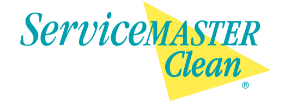
After reading this article, you will not be able to unknow what you are about to learn. So proceed with caution. Here is the startling truth: unless your cleaning company has a standard process for cleaning combined with a quality training program, the rags used to clean the bathrooms may be used to clean your desk.
How does this happen? How could someone violate the number one rule of cross-contamination? This can occur quite easily. The cleaner pushes around a janitor’s cart with rags and chemicals stored in the tray. As they move around the building, they pick the necessary chemicals, grab a rag, and start cleaning. If your office is cleaned after a bathroom, and there is no system for rag usage, then your desk may get cleaned with the same rag recently used to wipe down a urinal. Gross, right?
How can this be prevented? What systems need to be in place to avoid this cross-contamination problem? Your cleaning vendor should have the following three processes in place.
Cleaning Routes/Carts
If more than one person is needed to clean your facility, it often makes sense for one person to take care of offices while another handles restrooms, breakrooms, and other common areas. Even with one cleaner, there should be a clear distinction in the cleaning route between the restrooms and the other areas. Ideally, there is a separate cart used for restrooms and breakrooms. This does not eliminate our cross-contamination problem, but it is a move in the right direction.
Segmented Rags
A cleaning company should have a system for rags, where specific rags have certain usages. For instance, some companies have color-coded microfiber rags. Rags of a specific color (red, for example) are only used on restroom fixtures. Other rags are used in offices, breakrooms, and common areas. Some companies might use paper towels or disposable rags in the restroom areas. This too prevents cross-contamination. The methods may vary, but the goal should be the same: specific rags for specific areas.
New Cleaner Training
Finally, a janitorial company should have a thorough training process so new cleaners understand the methods used to prevent cross-contamination. Cleaning routes, separate carts, and a system for rags don’t do any good without a cleaner implementing it. Training is critical, particularly in the first few weeks on the job. Ensure your cleaning vendor has a combination of new-hire orientation, on-the-job training, and supervisor follow-up. A solid training program and good cross-contamination systems will prevent the above unpleasant scenario.
In closing, because the barrier to entry is very low for starting a janitorial company, the market can become flooded with vendors that may not have the above mentioned processes in place. Before selecting a janitorial vendor, make sure to ask them about their processes, or you might be unpleasantly surprised!

